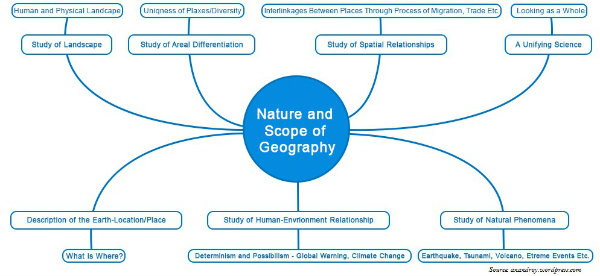
- Geography India - Introduction
- Geography India - Physical Aspect
- Geography India - Drainage System
- Geography India - Climate
- Geography India - Natural Vegetation
- Geography India - National Forest
- Geography India - Wildlife
- Geography India - Soil
- Geography India - Land Resources
- Geography India - Agriculture
- Geography India - Mineral Resources
- Geography India - Energy Resources
- Geography India - Industry
- Geography India - Transport
- Geography India - Communication
- Geography India - Foreign Trade
- Geography India - The People
- Geography India - Settlement
- Geography India - Migration
- Regional Development
- Geography India - Disasters
- Geography of the World
- Geography World - Introduction
- Evolution of the Earth
- Geography World - Climate
- Geography World - Transport
- Geography World - Communications
- Geography World - Population
- Human Settlement
- Human Development
- International Trade
- Geography Useful Resources
- Geography - Online Quiz
- Geography - Online Test
- Geography - Quick Guide
- Geography - Useful Resources
- Geography - Discussion
Geography World - Introduction
The term geography was first coined by a Greek scholar Eratosthenes.
The word geography carries basically two Greek terms i.e. geo (meaning earth) and graphos (meaning description), and the meaning of geography is description of the earth.
Geography is an interdisciplinary subject as well as it is a discipline of spatial synthesis.
Richard Hartshorne defines Geography as Geography is concerned with the description and explanation of the areal differentiation of the earths surface.
Hettner defines Geography as Geography studies the differences of phenomena usually related in different parts of the earths surface.
Further, the following diagram summarizes the concept of Geography as −

Approaches to Study Geography
-
The major approaches to study geography are −
- Systematic Approach and
- Regional Approach.
The systematic approach was introduced by a German geographer Alexander Von Humboldt.
On the other hand, the regional approach was also developed by a German geographer namely Karl Ritter; he was a contemporary of Humboldt.
In the systematic approach, first a phenomenon is studied world over as a whole, and then the identification of typologies or spatial patterns is done.
On the other hand, in the regional approach, first the world is divided into regions at different hierarchical levels and then all the geographical phenomena in a particular region are studied.
Because of the different approaches, geography is better known for its dualistic characteristics.
Branches of Geography
-
Based on systematic approach, main branches of geography are −
Physical Geography
Human Geography
However, Biogeography is the third branch, which is an interface between physical geography and human geography.
Major branches of Physical Geography are − Geomorphology, Climatology, Hydrology, and Soil Geography.
Major branches of Human Geography are − Social/Cultural Geography; Population and Settlement Geography; Historical Geography; Political Geography; and Economic Geography.
Major branches of Biogeography are − Plant Geography, Zoo Geography, Ecology/ecosystem, and Environmental Geography.
-
Based on Regional Approach, major branches of Geography are −
- Regional Studies,
- Regional Planning,
- Regional Development, and
- Regional Analysis.
Besides, there are some branches that study both the approaches. The branches are Geographical Thought, (Philosophy) and Methods and Techniques.
Methods and Techniques include Cartography, Quantitative Techniques/Statistical Techniques, Geo-informatics comprising techniques such as Remote Sensing, GIS, GPS, etc.